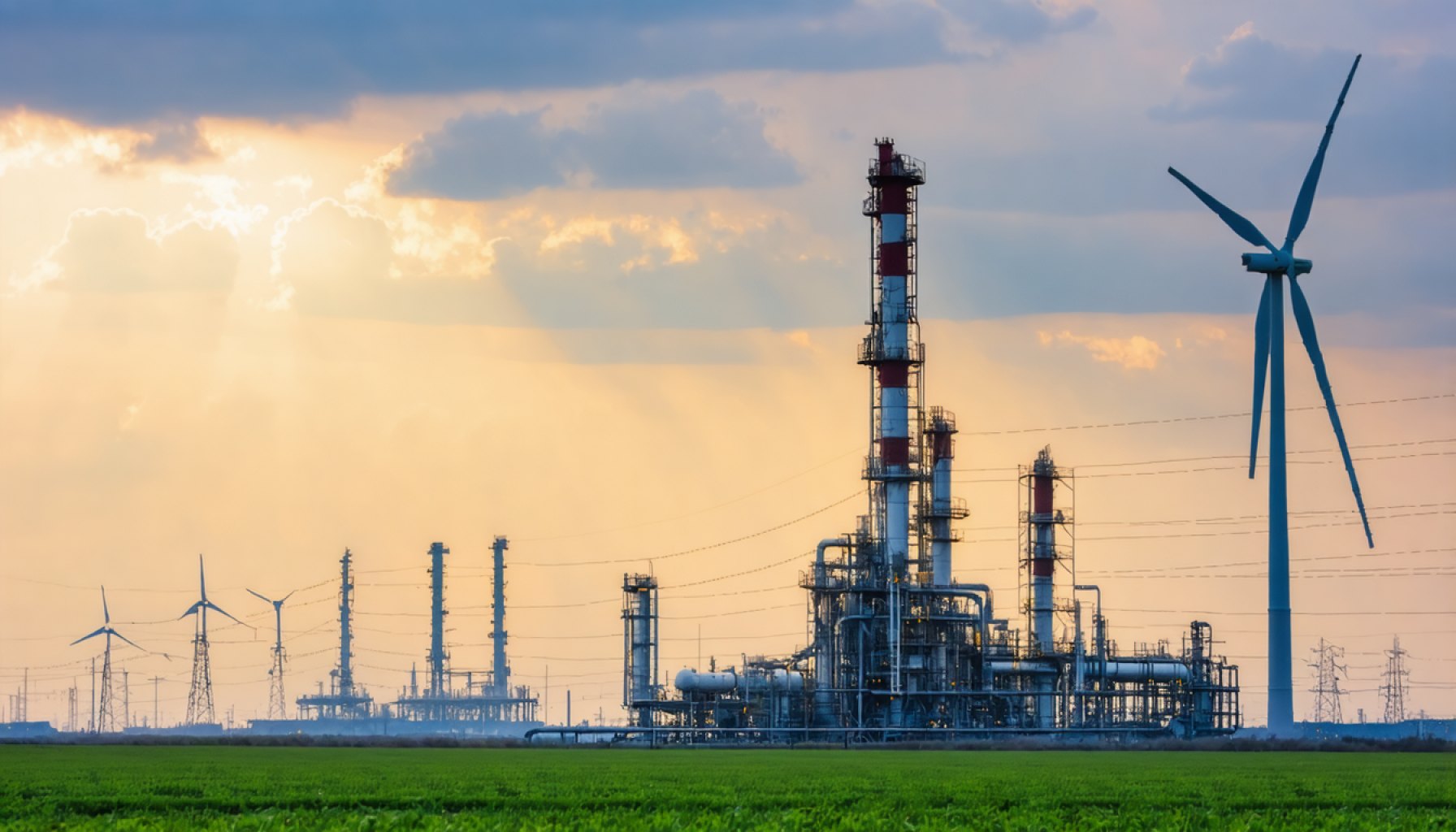- Senate Bill 178 in Indiana proposes classifying natural gas and propane as “clean energy” sources, sparking debates on its implications for the state’s energy future.
- AES Indiana plans to convert the Petersburg Generating Station from coal to a natural gas facility, potentially accessing federal clean energy grants if the bill passes.
- Environmental groups warn against the move, highlighting methane’s high greenhouse gas potency, suggesting that natural gas might not truly be “clean.”
- Similar legislative efforts are observed in Ohio, addressing ESG standards and environmental impacts while striving for economic growth.
- The outcome of Indiana’s decision could significantly impact national energy policies and redefine what qualifies as clean energy in future legislation.
Deep in the heart of Indiana, a legislative decision might reshape the landscape of clean energy as we know it. Senate Bill 178 sits patiently on the governor’s desk, carrying with it the ambitions of a state eager to transform its energy future. At the crux of this bill is the contentious classification of natural gas and propane as “clean energy” sources. The current debate swirls with both potential and skepticism as the clock ticks toward a gubernatorial decision.
AES Indiana, a significant player in the energy sector, has set sights on converting the Petersburg Generating Station from coal—a bygone energy relic—to a modern natural gas facility. Should the bill gain approval, the door could swing wide open for the inflow of federal clean energy grants to facilitate the transition. The prospect tantalizes with visions of cleaner energy, reduced emissions, and compliance with federal standards. However, there’s a hitch that could unravel these plans.
Environmental groups sound the alarm, cautioning that rebranding natural gas as “clean” might be more fantasy than reality. The environmental toll of natural gas isn’t lost on them; it’s less polluting than coal, yes, but still a wolf in sheep’s clothing. Methane, the silent menace of the natural gas narrative, is a greenhouse gas with a destructive potency 28 times that of carbon dioxide. Skeptics argue that despite legislative efforts, federal grants may remain elusive, as current programs rarely view natural gas through the same rose-colored glasses.
In a parallel move, Ohio’s legislature danced to a similar tune last year, eyeing improvements in how companies meet ESG (Environmental, Social, and Governance) standards. The dance includes balancing environmental impacts while maintaining economic growth—a juggling act that continues to confound policymakers nationwide.
The unfolding drama of Senate Bill 178 raises probing questions about our collective journey toward sustainable energy. Is redefining natural gas as “clean” energy a necessary step towards the future or a misstep on the path to environmental responsibility? As states like Indiana and Ohio attempt to redraw the lines of clean energy, the rest of the country watches, waiting to see if this legislative gamble will pay off—or if it’s a mirage in the heartland of American energy.
In the end, the decision could serve as a pivotal chapter in the ongoing saga of our evolving energy narrative. If natural gas does cross the threshold into “clean” territory, the implications will ripple across industries and environmental policies nationwide. For now, all eyes are on Indiana, where the signature of a governor could very well mark the dawn of a new era—or a stark reminder of the challenges that lie ahead.
Is Natural Gas the Future of Clean Energy? The Indiana Senate Bill Debate Unveiled
Understanding Senate Bill 178’s Impact on Energy Transformation
Senate Bill 178, currently awaiting the governor’s signature in Indiana, has stirred a significant debate surrounding the future of clean energy by proposing the categorization of natural gas and propane as “clean energy” sources. This legislative move is not an isolated phenomenon, as similar discussions have been observed in other states, such as Ohio, reflecting a broader national discourse.
Natural gas is often touted as a “bridge fuel” due to its lower emissions compared to coal. However, environmental groups and experts highlight the complexities surrounding its environmental impact, particularly the potent greenhouse effect of methane emissions associated with natural gas production and usage.
Key Questions and Insights into Natural Gas as a Clean Energy Source
1. What are the potential environmental benefits?
– Transitioning from coal to natural gas could reduce carbon dioxide emissions and other pollutants, as natural gas combustion is generally cleaner than coal (U.S. Energy Information Administration).
2. What are the environmental risks?
– Methane emissions from natural gas can negate some of its climate benefits by contributing significantly to greenhouse gas concentrations. Methane is known to be 28 times more potent as a greenhouse gas over a 100-year period compared to carbon dioxide (Intergovernmental Panel on Climate Change).
3. What about the economic opportunities?
– Redefining natural gas as “clean” could open the door to federal grants and incentives designed to promote clean energy projects, potentially boosting local industries and job creation within the energy sector.
4. How do other states handle similar challenges?
– Ohio recently explored similar classifications with an eye on improving ESG standards. This balance between environmental sustainability and economic growth continues to challenge policymakers across the United States.
Market Forecast and Industry Trends
– The global natural gas market is expected to grow as various countries aim to reduce their reliance on coal. However, the development of renewable energy sources may outpace natural gas if technological advancements and investments continue to favor solar, wind, and other truly renewable technologies (Bloomberg New Energy Finance).
Actionable Recommendations for Policymakers and Industries
– Thorough Impact Assessments: Conduct comprehensive assessments of environmental impacts, including lifecycle emissions of natural gas projects, to inform policy and investment decisions.
– Promote Methane Management: Invest in technologies to minimize methane leakage during natural gas production, transportation, and consumption.
– Diversify Energy Mix: While considering natural gas, also invest in expanding renewable energy infrastructure to reduce dependency on fossil fuels over time.
– Public Engagement and Transparency: Maintain transparency with public stakeholders regarding energy strategies and decisions to foster trust and collaboration.
Pros and Cons Overview
Pros:
– Potential reduction in emissions compared to coal.
– Economic incentives and job creation in the energy sector.
– Bridge fuel towards a decarbonized future.
Cons:
– Methane emissions could diminish environmental benefits.
– Potential public opposition from environmental groups.
– Risk of diverting focus and investments from renewables.
For further insights into energy trends and policies, visit the U.S. Energy Information Administration and Bloomberg New Energy Finance.
This evolving narrative on natural gas as a “clean” energy source challenges us to rethink energy policies in favor of both immediate and long-term environmental health. Policymakers must weigh the advantages against the potential ecological risks, considering how these decisions will shape America’s energy landscape.














